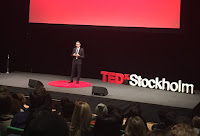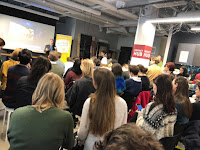TED’s Magical Red Carpet

Watch any TED(x) video or, better still, attend a live event, and you will probably notice that speakers stand in the middle of a circular red carpet. This choice is not just a question of aesthetics. That red carpet actually plays a key role in the success of the TED format. Having the speaker stand in the middle of a red carpet has several important consequences, leading the speaker to follow best practices that they might not be aware of. No script or notes . Since there is no table, lectern or other furniture within reach, the speaker cannot easily read from a script. This forces them to deliver their talk from memory, which is much more compelling because few people can read from a script and make it sound natural. And no matter how good you are at reading, the audience can see that your eyes are scanning the text and this breaks the magical connection with their minds. Encouraging people to speak from memory pushes them to make a much better talk than they might ot...



